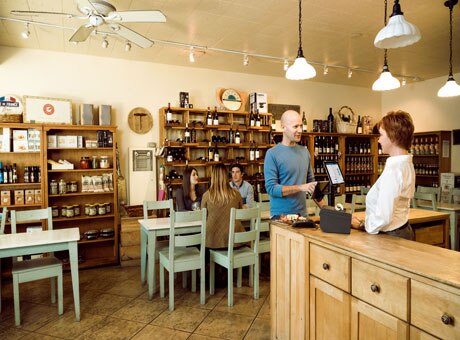Avalanches of packages arriving on shoppers’ doorsteps, or so it seems, might have you wondering if it’s worth it to have a physical store. If you’re planning on launching a retail business—or if you currently run an online-only store — you should know about a recent Statistics Canada study that’s raising eyebrows across Canada’s retail industry. The study actually shows that sales in some brick-and-mortar stores are up across the country.

Where Do Canadians Shop: Surprising Findings About the Retail Industry
Shoppers Love Top-Tier Malls
Canadians still shop online, but they’re also shopping at malls. Statistics Canada found out that shoppers are specifically hitting top-tier malls in large numbers. These types of malls tend to be new construction or have undergone significant renovations. They’re enclosed, meaning they have a roof and several entryways. Top-tier malls have several anchor stores, lots of luxury stores and attract millions of local and international visitors every year. Top-tier malls Toronto’s Eaton Centre and the Pacific Centre in Vancouver are examples of malls that are shaking up the retail landscape. In 2016, shoppers spent around $1.9 billion on these types of malls.
Power centres — open air malls with big-box anchor stores and large parking lots — raked in about $1.1 billion the same year. Neighbourhood malls, located at the heart of established communities, aren’t doing well, though. They’re casualties of the retail apocalypse, the phenomenon of anchor stores moving or going out of business in record numbers, and the future for the retail stores left behind looks bleak.
What Mall-Goers Are Doing and Buying
Clothing is the biggest seller at top-tier malls, reports the Statistics Canada study. The fact that people are buying clothes more than anything else accounts for the large number of clothing retailers leasing space in popular malls. But getting the right fit isn’t the only thing attracting consumers to mega-size malls. The study also reveals that mall owners have invested a lot of money in boosting recreational choices for mall-goers. For this reason, high-traffic top-tier malls often have extensive dining and entertainment options to attract visitors, whether or not they’re planning to shop.
Where Online Fits In
E-commerce continues to make its presence felt in the retail industry, but as of 2016, about eight per cent of retail transactions took place online, reports the Retail Council of Canada. Overall, Canadian shoppers prefer a hybrid approach to e-commerce. They like options like browse online, shop in-store, order online, pick-up in-store. The most successful retailers offer consumers various options to capture their customers’ business wherever they are — online or at the mall.
A Winning Strategy
In some cases, it might make sense for you to open a store at a top-tier mall. If extensive market research shows that opening a mall location could boost your business—and you have the financial means to do so—then it might be the right thing to do. If you’re on a limited budget, as many small business owners are, it’s important to think outside the box. Approaches you can use to win in the current retail environment include selling niche products that complement those sold in mall stores, but that aren’t available at the mall. If you manufacture products, especially clothing or accessories, you might try becoming a supplier to a mall retailer to expose your brand to a wider market.
As the landscape shifts under retailers’ feet, flexibility is the name of the game. You don’t have to make any sudden moves, but observing industry changes and adapting as they happen can ensure short-term and long-term success.


